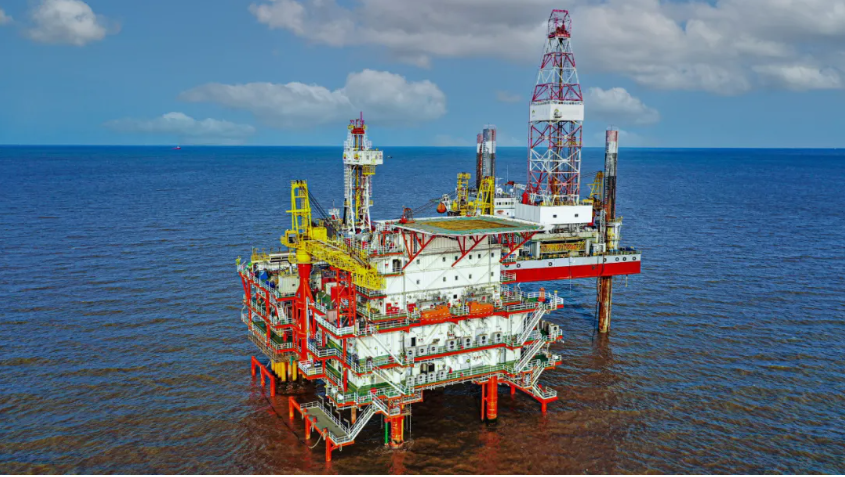Could Upstream Exploration Seize Growth Opportunities During the Oil Price Downturn
In its annual "World Energy Investment Report," the International Energy Agency (IEA) predicts a decline in global oil and gas exploration investment by 2025. Against this backdrop, it has become increasingly urgent for petroleum companies to strengthen upstream exploration at this stage.

From the perspective of development history, over the decade following the sharp decline in oil prices in 2014, the global oil and gas exploration sector experienced an extended period of cognitive challenges, with related investments shrinking by two-thirds over the past ten years. Particularly during periods of low oil prices, some oil/petroleum companies chose to slash upstream exploration investments. While this strategy boosted short-term profitability, it undermined the foundation for medium and long-term sustainable development. For instance, several Chinese oil companies significantly reduced exploration spending during the low-oil-price era, leading to substantial resource replacement shortages even after international prices rebounded in 2021.
In contrast, some international petroleum companies maintained their exploration intensity even during the periods of low oil prices, adopting a "counter-cyclical" strategy. This approach not only led to significant discoveries of integrated oil and gas reserves but also substantially improved their economic performance during the low-oil-price period. For example, since around 2014, Eni has continuously refined its “double-exploration model.” After achieving major oil and gas discoveries in frontier areas such as the offshore regions of Mozambique and Egypt through high-risk exploration, the company rapidly monetized portions of the newly discovered recoverable reserves. This strategy allowed Eni to retain high-quality assets while generating substantial cash flow.
Furthermore, looking back at the century-long history of the petroleum industry, oil and gas exploration has always followed the development principle of being “long-periodic, capital-intensive, high risk, and high return“ Breakthroughs in large-scale discoveries are impossible without guaranteed investment, sufficient time, and a tolerance for trial and error. In other words, regardless of the development stage, oil companies must prioritize upstream exploration.

From the perspective of resource acquisition, upstream exploration serves as a primary approach of "organic growth" for oil companies and plays a crucial role in meeting the growing global demand for oil and gas. According to Wood Mackenzie’s predictions, the decline in production from existing oil fields will lead to a global supply-demand gap exceeding 20 million barrels per day by 2034, urgently necessitating the addition of new reserves. S&P Global reports that in 2024, a total of 197 conventional oil and gas discoveries were made worldwide, adding approximately 1,262 billion tons of oil equivalent in recoverable reserves—a 15% drop compared to the previous year.
Over the past five years, several industrial giants have secured large-scale, high-quality reserves through frontier exploration. For instance, ExxonMobil's discoveries offshore Guyana, Eni's ventures in Côte d'Ivoire and Cyprus, and TotalEnergies' projects offshore Namibia have laid a solid foundation for future production growth.
On the other hand, some new oil and gas discoveries, particularly large-scale deepwater finds, exhibit lower carbon emission intensity, making their resource quality significantly superior to that of certain mature field development projects. For example, new oil and gas projects expected to commence production between 2025 and 2030 are projected to have an average Scope 1 and Scope 2 carbon emission intensity of just 17kg CO₂ equivalent per barrel of oil equivalent. In contrast, the average emission intensity of existing mature oil fields reaches as high as 28 kg equivalent per barrel.

From the perspective of profitability, historical experience shows that less than one-third of upstream exploration efforts lead to successful oil and gas discoveries, and merely one-sixth of these discoveries result in economically recoverable reserves. However, large-scale economically recoverable reserves acquired through exploration can generate substantial benefits for petroleum companies. According to Wood Mackenzie, assuming a long-term Brent crude price of USD 65 per barrel, new economically recoverable reserves discovered since 2015 have contributed over USD 160 billion in profits for petroleum companies globally. During this period, the average full-cycle return on upstream exploration projects exceeded 15%.
Compared to upstream mergers and acquisitions—the primary approach for "inorganic growth" in the industry—upstream exploration proves to be more economically advantageous. Since 2020. The average break-even price for reserves acquired through global upstream exploration has been USD 45 per barrel of oil equivalent, calculated based on a 10% net present value of projects. In contrast, the average break-even price for reserves obtained through upstream mergers and acquisitions activities has reached USD 65 per barrel of oil equivalent.
Moreover, due to intense competition in the global oil and gas resource mergers and acquisitions market, companies often have to pay significant premiums to acquire high-quality assets when they become available.

From the perspective of technical assurance, since 2014, the oil and gas industry has significantly enhanced its upstream exploration capabilities through technological and managerial innovations. For example, China's offshore oil and gas exploration and development has achieved a historic leap from operating in 300 to 1500 meters of water depth in recent years. Domestically developed systems, integrated marine seismic acquisition equipment and deepwater semi-submersible drilling platforms have been successfully deployed in deepwater exploration activities.
Petroleum companies have widely established strict investment criteria based on their upstream exploration management system, covering various aspects such as internal rate of return, payback period, future carbon pricing forecasts, minimum break-even thresholds, and carbon emission intensity. These measures collectively contribute to improving the efficiency of upstream exploration.
Furthermore, the application of digital and intelligent technologies presents new opportunities for advancing upstream exploration. For instance, artificial intelligence continues to enhance the acquisition, processing, and interpretation of seismic data, while higher-resolution subsurface imaging may act as a "catalyst" for innovation in new exploration theories.

From the perspective of exploration strategy, deep-layer, deepwater, and unconventional resources will remain the key focus areas for global upstream exploration in the near to medium term. Conventional oil and gas exploration efforts are primarily concentrated in regions such as the Atlantic coast of Africa, the Eastern Mediterranean, the Atlantic offshore areas of sub-Saharan Africa, and the Orange Basin offshore Namibia.
Conventional oil and gas exploration efforts are primarily concentrated in regions such as the Atlantic coast of Africa, the Eastern Mediterranean, the Atlantic offshore areas of sub-Saharan Africa, and the Orange Basin offshore Namibia. Meanwhile, unconventional oil and gas exploration is expanding outside the United States, with major activities including shale gas exploration in Saudi Arabia's Jafurah Field, shale oil exploration in Argentina's Vaca Muerta Formation, and shale gas projects in Algeria.
In terms of the domestic petroleum companies, the development of oil and gas exploration has achieved significant progress in recent years. However, it remains essential to further intensify exploration efforts. Firstly, it is crucial to realize that, regardless of oil price fluctuations, investment in oil and gas exploration serves as the backbone for ensuring the sustainable and stable development of the company’s future resource strategy. Secondly, efforts should be made to strengthen the ability of oil and gas exploration, particularly by enhancing R&D and integration of theoretical research, technology, and equipment. Innovation plays an important role in driving efficiency improvement and achieving ultimate breakthroughs. Thirdly, it is important to clear and define the following exploration priorities—focusing on key onshore basins and zones in eastern and central-western regions, as well as offshore areas. Emphasis should be placed on high-risk exploratory drilling and expanded pre-exploration, while enhancing detailed exploration in mature eastern areas. Meanwhile, intensified and concentrated exploration should be carried out in the central-western regions and offshore domains, with efforts to pioneer new zones and frontiers, particularly in key basins. Fourthly, inter-company collaboration should be strengthened to foster risk sharing and benefit sharing, thereby improving collective expertise in oil and gas exploration.
